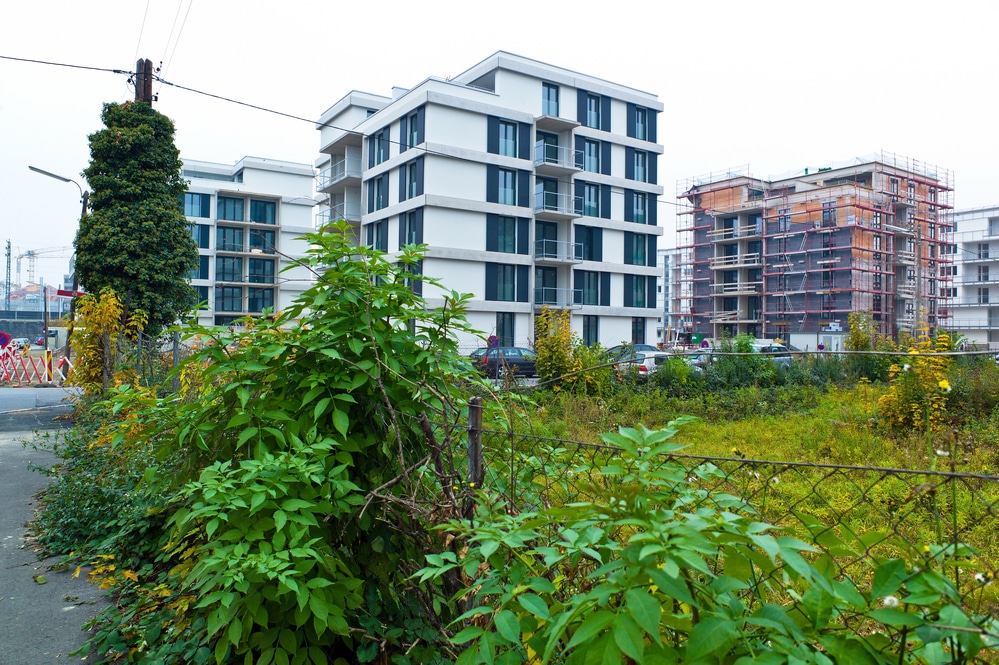Tiny Homes and Infill Housing 101 [Podcast]

Topic:
Spurring Community Revitalization
In This Episode:
01:36 Co-host Kate Meis is introduced.
01:44 Guest Darin Dinsmore is introduced.
01:53 Darin shares how he ended up working on affordable-housing and infill-housing issues.
02:24 Darin explains what smart infill housing is.
02:50 Darin describes what infill and smart growth look like in rural communities like Truckee, California.
03:54 Darin provides information on his tiny-home project.
06:04 Darin discusses the zoning ordinance for the tiny-home project in Arizona.
06:50 Kate mentions that with the growing interest in tiny homes, local governments are having to figure out how to keep the zoning updated.
07:23 Mike comments on the dynamic of minimal residential house size and people who are living in hotel rooms.
08:11 Darin speaks about micro-units and single-room occupancy units.
08:46 Darin tells about the infill score and revitalization roadmap tool.
09:27 Darin states where people can go to take the infill-readiness test.
09:48 Darin describes the Crowdbrite tool.
11:25 Darin shares where people can go to access the Crowdbrite tool.
11:39 Darin mentions where the Crowdbrite tool is being used.
12:06 Darin supplies some of the things communities can do to be infill ready.
13:01 Mike adds to the discussion that there’s a public-approval issue.
13:24 Kate conveys that most Americans prefer smart growth.
13:33 Darin provides some of the challenges cities face in becoming infill ready.
Co-Host:
 Kate Meis joins the Infinite Earth Radio as the co-host for this episode. Kate Meis is the Executive Director of the Local Government Commission (LGC). Kate is a champion for local governments; a recognized leader in local climate change adaptation, mitigation and clean energy efforts; and an ardent coalition builder. She obtained a Masters of Science degree in Community and Regional Development from the University of California, Davis, and has a Sociology Bachelor’s degree from California State University, Sonoma.
Kate Meis joins the Infinite Earth Radio as the co-host for this episode. Kate Meis is the Executive Director of the Local Government Commission (LGC). Kate is a champion for local governments; a recognized leader in local climate change adaptation, mitigation and clean energy efforts; and an ardent coalition builder. She obtained a Masters of Science degree in Community and Regional Development from the University of California, Davis, and has a Sociology Bachelor’s degree from California State University, Sonoma.
Guest:
 Darin Dinsmore is an urban planner & landscape architect with over 25 years of experience in community-based planning and design. He launched Crowdbrite in 2010 to bring plans to life and find solutions to improve civic engagement. His award-winning interactive online tools (www.crowdbrite.net) has helped more than 500k people design their city while leveraging more than $2.5b of new investment. The Crowdbrite team helps build the natural, social and financial capital to strengthen neighborhoods and revitalize communities. We were awarded app of the year 2016 by the Lincoln Land Institute with projects featured in Fast Company Magazine.
Darin Dinsmore is an urban planner & landscape architect with over 25 years of experience in community-based planning and design. He launched Crowdbrite in 2010 to bring plans to life and find solutions to improve civic engagement. His award-winning interactive online tools (www.crowdbrite.net) has helped more than 500k people design their city while leveraging more than $2.5b of new investment. The Crowdbrite team helps build the natural, social and financial capital to strengthen neighborhoods and revitalize communities. We were awarded app of the year 2016 by the Lincoln Land Institute with projects featured in Fast Company Magazine.
To help create more sustainable and vibrant communities he launched a suite of SMART planning tools including www.infillscore.com and the Community Revitalization Program, used by more than 400 communities. In 2017 Darin is working to create new jobs and innovative housing solutions with a Tiny House demonstration project.
Organization:
 Crowdbrite’s mission is to work with cities and developers to help build more affordable, vibrant and walkable communities. In the first 12 months since launch Crowdbite has 400+ cities engaged in 47 states and 7 countries, won a national planning award, and have started a movement toward cities taking a proactive approach to SMART infill.
Crowdbrite’s mission is to work with cities and developers to help build more affordable, vibrant and walkable communities. In the first 12 months since launch Crowdbite has 400+ cities engaged in 47 states and 7 countries, won a national planning award, and have started a movement toward cities taking a proactive approach to SMART infill.
You can help Crowdbrite reach their goal of 1,000 cities in the next 3 months, to support a data driven approach community revitalization. Your Challenge:
Step 1 – explore the 30 SMART Strategies here
Step 2 – Read About Infillscore & Watch the www.infillscore.com video
Step 3 – Take 7 minutes to complete www.infillscore.com for your community
To learn about Crowdbrite’s consulting services for community revitalization please contact Darin at darin@crowdbrite.com
Take Away Quotes:
“I’m originally a planner from Canada, came to the United States, came to California, back in 1999. As a nonprofit planning director, really got involved in working with communities, doing community-based planning, and one of the big issues is infill development and, today now more than ever, affordable housing.”
“Most cities, as you’re aware, including St. Louis, where we are now, have lots that are underutilized or could be utilized better or parking areas that could be used for housing and things. It’s just making better use of those lands where there are existing services—water, sewer, parks, schools—and how can we use those lands more efficiently and more effectively.”
“Truckee, for instance, was one of the last incorporated cities in California, and it really was and grew as a bunch of, sort of, scattered neighborhoods in Placer County. And since they’ve incorporated, they’ve been, basically, trying to knit that community fabric together with roads, parks, schools, and infrastructure to really become that community and that town that’s more walkable and friendly for its citizens. And so their type of infill isn’t large-scale projects; it’s small two- and three-story buildings, accessory dwelling units, even, maybe, tiny homes in your backyard.”
“About a year ago we launched this infill-score tool. It’s a tool for citizens, elected officials, and planners to kind of get a number in terms of their infill readiness, and it takes about 10 minutes online to calculate your score. And in the last year, without really any advertising, we’ve had 250 cities in seven countries and every state except Delaware use the tool. So we’re seeing that there’s a lot of interest and demand in tools and strategies for smart infill.”


![Tiny Homes and Infill Housing 101 [Podcast]](https://elemental.green/wp-content/uploads/2017/05/Depositphotos_11994776_m-2015-1000x640.jpg)
![What Exactly is a Zero Energy / Net Zero Home? [Podcast]](https://elemental.green/wp-content/uploads/2017/02/Depositphotos_86352294_m-2015-440x264.jpg)




